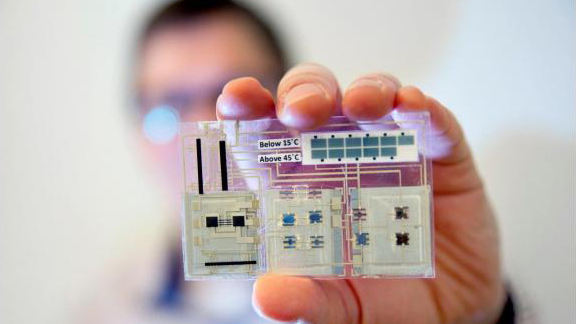Progress has been made with printed electronic circuits and these pave the way for further advances with smart devices. The flat printed circuits can be embedded into flat structures, such as plastic and cardboard.
With the new development, scientists have fabricated printed transistors. These are formed from 2-dimensional nanomaterials. This development unlocks the potential for smart applications to be embedded into food packaging. An example could be a digital countdown indicating when a food item approaches is ‘use by’ or ‘sell by’ dates. A related area could be in the label on a wine bottle, to signal when the wine is at the correct temperature for pouring. It may even be possible to fit a 2-dimensional circuit into a window pane, and have the weather outside displayed onto the window glass.
The development comes from AMBER, which is the science research Centre hosted in Trinity College Dublin, Ireland. The research team is led by Professor Jonathan Coleman. The research involved fabricating conducting, semiconducting and insulating two-dimensional nanomaterials can be combined together in complex devices. The initial work focused on transistors, since the ability to switch on and switch off a circuit remains the basis of modern electronic devices. At the heart of the process is graphene, a one atom-thick form of carbon that is transparent, very strong and a good conductor of electricity.
The process involved using graphene nanosheets as the electrodes combined with two other nanomaterials: tungsten diselenide and boron nitride. These other materials act as the channel and separator respectively. When placed together, in liquid form, it is possible to create a printed nanosheet in the form of a working transistor. The different materials provide the building blocks for electronic properties that can be conducting, insulating or semiconducting. The new process overcomes the limitations associated with printable carbon-based circuits. These are unstable and their performance is limited. Trials have shown the new circuit boards to be fully-functioning.
Discussing the importance of the development, Professor Coleman states in a research note: “In the future, printed devices will be incorporated into even the most mundane objects such as labels, posters and packaging. Printed electronic circuitry will allow consumer products to gather, process, display and transmit information.






